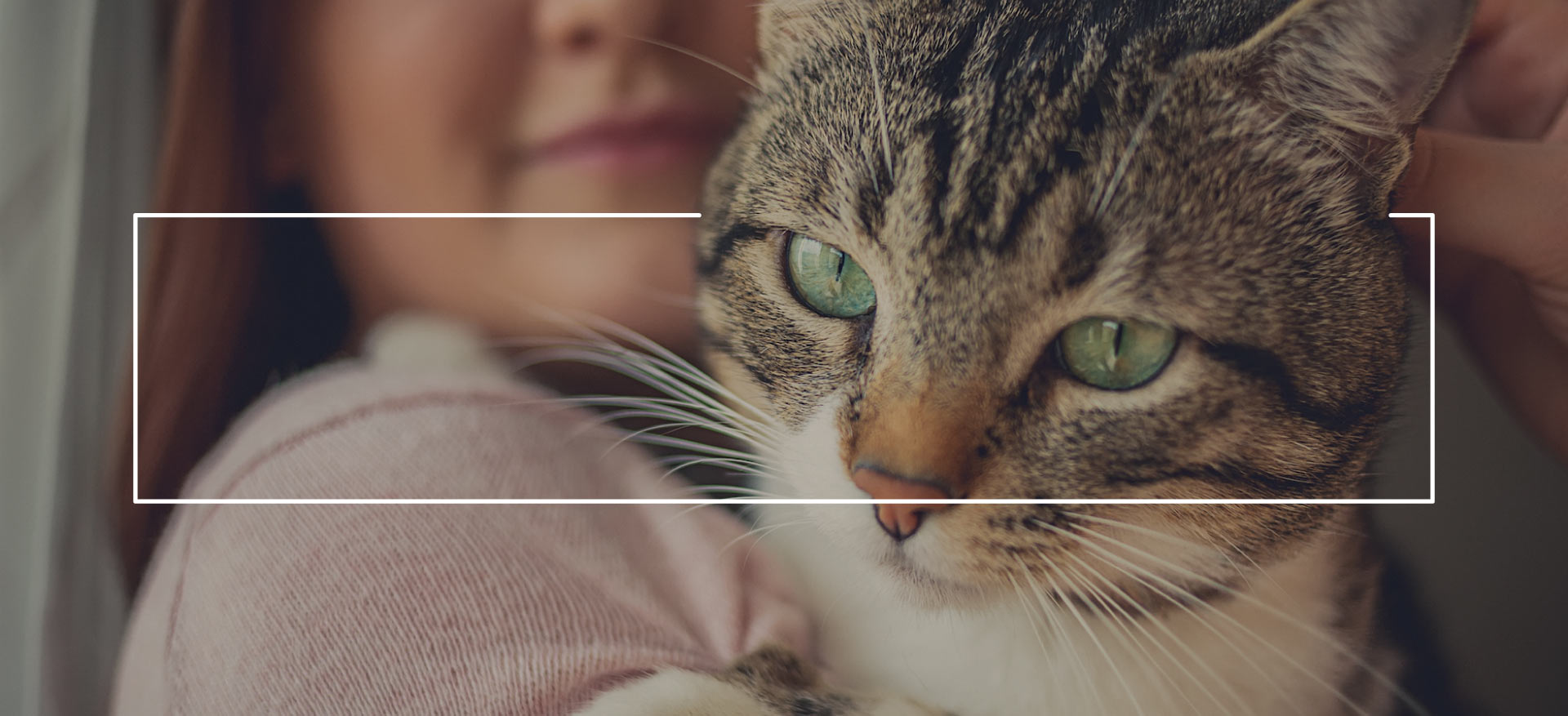When trying to deworm your cat, do these situations sound familiar to you?

Stress
Any change in routine may stress cats, even giving them a tablet! Dilated pupils, tremors, excessive salivation, vocalizations and aggressiveness are some of the signs cats show when they’re stressed. Plus your own stress!

Scratches and bites
Cats fight tooth and nail to defend themselves against any threat, and anybody around them may get hurt.

Digestive intolerance
Due to stress, the features of antiparasitic products and/or car movement when coming back from the vet, your cat may vomit, and the product doesn’t work if this happens.

Incomplete dose
Partial intake of or intolerance to the antiparasitic product makes deworming fail, and your cat and your family won’t be protected.
Feline is…

Stres-free
deworming
It’s applied on the skin. It doesn’t invade your cat’s space or cause them stress.

Safety
Your cat remains calm and they’re not on the defensive: no more accidental scratches or bites.

Ease of use
Deworm your cat with a single touch and in less than 1 minute.

Digestive tolerance
It’s applied on the skin. Vomiting and intolerance to the antiparasitic product aren’t an issue.

Complete dose
The total dose is applied, and parasites are eliminated from your cat.

The whole family is protected.
Deworming your cat on a regular basis prevents diseases that affect cats as well as humans (zoonoses).
Feline eliminates roundworms, tapeworms, fleas and mites

Feline protects the whole family
What are the most common cat parasites that may affect humans?
Toxocara cati (roundworm)
Common source of infection
Soil and/or food contaminated with parasite eggs. Newborn kittens get infected via maternal milk. As they grow, soil is the main source of infection.
How does it affect cats?
Abdominal bloating, appetite loss, vomiting, weight loss, diarrhea. Some cats don’t have any symptoms. It may be fatal to kittens.
What are the clinical signs in humans?
These worms cause toxocariasis, a disease caused by the migration of worm larvae that hide in various organs: eyes (ocular larva migrans); skin (cutaneous larva migrans); brain, lung, liver, etc. (visceral larva migrans).
How can it be prevented?
Deworm your cat on a regular basis. Follow hygiene habits: wash your hands, wash vegetables, etc.
Ancylostoma spp. (roundworm)
Common source of infection
Larvae enter the body together with maternal milk (kittens), by licking contaminated surfaces or directly through the skin.
How does it affect cats?
Bloody diarrhea, anemia, weight loss. Some cats don’t have any symptoms. It may be fatal to kittens.
What are the clinical signs in humans?
These worms cause toxocariasis, a disease caused by the migration of worm larvae that hide in various organs: eyes (ocular larva migrans); skin (cutaneous larva migrans); brain, lung, liver, etc. (visceral larva migrans).
How can it be prevented?
Deworm your cat on a regular basis. Follow hygiene habits: wash your hands.
Dipylidium caninum (tapeworm)
Common source of infection
Intake of infected fleas
How does it affect cats?
Diarrhea. Rice-sized worms around the anus, itching in that area.
What are the clinical signs in humans?
Abdominal cramps. Diarrhea. It mainly affects children.
How can it be prevented?
Deworm your cat against fleas and tapeworms at the same time. Follow hygiene habits.
Fleas
Common source of infection
Contact with pets or environments infected with fleas
How does it affect cats?
Itching. Cats allergic to fleabites scratch even more and may tear off their fur. In addition, fleas transmit diseases such as dipylidiasis and feline infectious anemia, which may be fatal.
What are the clinical signs in humans?
Irritation, itching. They transmit bartonelosis or “cat scratch disease” (fever, enlarged lymph nodes, weakness).
How can it be prevented?
Remove fleas from your cat and treat your house against flea eggs and larvae. Minimize the risk of scratches or bites.
Toxoplasma gondii (coccidium)
Common source of infection

Eating contaminated raw meat, hunting and eating mice or other wild animals.

Raw meat, unsafe water, contaminated fruit and vegetables that have not been properly washed or cooked. Touching your mouth with your hand after manipulating soil or sand containing infected stools.
How does it affect cats?
Diarrhea, apathy, appetite loss, weight loss, fever.
What are the clinical signs in humans?
Clinical signs include a simple cold or no symptoms at all. Women that get infected during pregnancy are the most exposed and at higher risk, because worms may go through the placenta and cause brain damage.
How can it be prevented?

Avoid feeding raw meat to your cat. As you can’t prevent your cat from going out, you may hang a bell around your pet’s neck to interfere in their hunting habits.

Cook meat properly (toxoplasma dies at 72°C) and avoid eating cold cuts during pregnancy. Pick up your cat’s stools from the litter box on a regular basis. Always wear gloves to do the gardening. Properly wash fruits and vegetables before eating them.
Do you have any other questions about toxoplasmosis?
May I get infected from my cat?
The only way of getting infected is manipulating stools and then touching your mouth. Therefore, it’s very important that you pick the stools up every day.
If there’s a pregnant woman at home, should I relocate my pet or put them up for adoption?
You don’t need to relocate your pet if there’s a pregnant woman at home. Just remember to pick your pet’s stools up every day. If possible, pregnant women shouldn’t do this task.

We introduce you to our product line
MoreQuestions or comments?
We want to hear from you. Fill in the form and we will contact you shortly.



